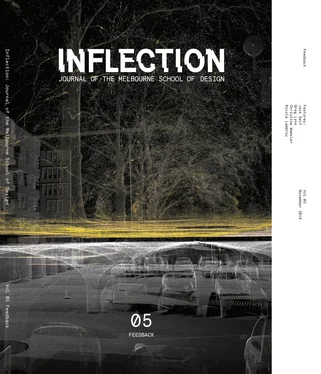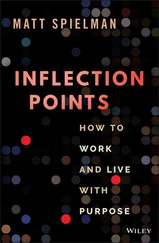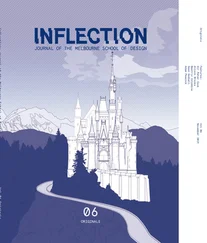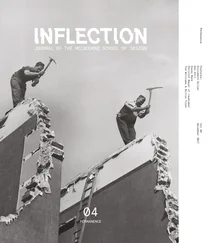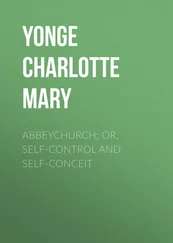Michael Thorpe
Michael Thorpe graduated with a Master of Architecture from the University of Melbourne and now predominantly works on rail infrastructure and micro housing at Grimshaw Architects. He is interested in the interface with industrial design and architecture, and has exhibited his design work in Finland, the UK, Italy and Australia. His work has featured in publications such as The New York Times, ArchDaily and Dezeen.
Millie Cattlin
Millie Cattlin is a co-founder of These Are The Projects We Do Together. She is fascinated with buildings and infrastructure, as opposed to architecture, and is driven to design projects that support and enable creativity and accessibility. Her first building as an architect was a temporary public toilet at Testing Grounds—leveraging an existing budget allocation for 12 months of Portaloo hire. It is a humble structure, defined by generosity and softness in public space. Six years later it’s still there.
Olivia Potter
Olivia Potter is a Master of Architecture student at the University of Melbourne and a current editor of Inflection. In 2017 she received a Dean’s Award for her studies. Her work was displayed in Federation Square after her team was short-listed for Melbourne’s Backyard Ideas Competition. She is heavily left-handed and her hair currently hosts the winning cut of the Melbourne Hair Expo Mullet Competition.
Nicole Lambrou
Nicole Lambrou is a practicing architect, urban designer and researcher. Her practice tinkercraft attempts to reveal and question the relationship between people, institutions and the makings of natures through design and research. Her writing and projects focus on how the politics of climate shape urban environmental transformations. She documents the work of design and planning professionals and everyday urban dwellers in making new natures in their cities and explores the values that drive their efforts.
Nicholas Gervasi
Nicholas Gervasi is an architect at Terreform ONE. Nicholas earned his Master of Architecture from Tulane University in 2012. He received a Master of Science in Historic Preservation from the Columbia University Graduate School of Architecture, Planning & Preservation. Together with Alexander Ford, he was awarded the Cleo and James Marston Fitch Prize for their joint studio project.
Sarah Hirschman
Sarah Hirschman is an architect and researcher based in California. She is the 2017–18 Howard E. LeFevre Emerging Practitioner Fellow at the Knowlton School of Architecture at the Ohio State University, where she has recently opened Paranomasiac . She received a Master of Architecture from MIT and a Master of Arts in Modern Culture and Media from Brown University. She has taught design studios at MIT, UC Berkeley and the Ohio State University, and her work has been published in Clog , Thresholds , Architect Magazine and Future Anterior.
William Ward
William Ward is a Master of Architecture student at the University of Melbourne and a current editor of Inflection . He holds a Bachelor of Architectural Design from the University of Queensland. In the past, he has worked for Twohill and James in Brisbane. His current area of interest is design knowledge, which he plans to continue researching into the future.
CONTENTS
Editorial
Olivia Potter Notes on Point Clouds
Sarah Hirschman Harold as Feedback’s Foil: Improvisational Comedy and Architecture
Jack Self With Great Power…
Kevin Jones Territories of Feedback: Process, Project and Pedagogy in the Design of a New University Library in Malawi, Africa
Curtis Roth Ten Outsourced Interiors: On the Disentanglement of Creative Expression from Productive Labour
Alice Schenk-Green and Michael Thorpe 200 Years of Identity
William Ward A Red Wine Cheers: To the Intimacies of Industry
Joshua Bolchover On Frameworks
Hamish Lonergan Fuck Yeah Hume: Architectural Taste on Social Media
Joseph Norster and Millie Cattlin Analogue Loop: These Are The Projects We Do Together
Nicole Lambrou Making Landscapes Legible: An Ecology of Feedback Loops
Isabella Ascenzo How to Survive Aleppo 
Jil Raleigh Treeplayer: Reconnecting People and Trees Through Sound
Greg Lynn The Future of Craft
Christine Wamsler On Resilience and Natural Disasters
James Bowman Fletcher Boiling Water: Contemporary Society’s Misplaced Preoccupation With Time-Saving Devices
Alexander Ford and Nicholas Gervasi Experimental Preservation: Architectural Assimilation of an Ephemeral Monument Through Experimental Preservation
EDITORIAL
Lucia Amies, Samuel Chesbrough, Sarah Mair, Olivia Potter and William Ward
Inanimate data can never speak for themselves, and we always bring to bear some conceptual framework, either intuitive and ill-formed, or tightly and formally structured, to the task of investigation, analysis, and interpretation. —Rob Kitchin, The Data Revolution: Big Data, Open Data, Data Infrastructures and Their Consequences.
At present, the term ‘big data’ is virtually ubiquitous: think Cambridge Analytica, social credit and crime prevention systems powered by exhaustive data collection and targeted advertising in our email. Inflection vol. 5: Feedback is an exploration of how designers might manifest this trend within the built environment. Once the purview of software engineers and data scientists, trends in feedback collection, use and theory are now being influenced by designers, while their everyday practice is increasingly concerned with its outcomes.
While we speculate about the boundaries of design’s future, we also critique its present and revisit its past. The original provocation for this volume of Inflection used Cedric Price and Joan Littlewood’s unbuilt Fun Palace project as a framework for speculation. The project was a tongue-in-cheek (but also deadly serious) reaction to the marked increase in available leisure time in the post-World War II era. The allure and the life of the project (arguably) are not found in its architectural expression, but in Price and Littlewood’s utopian aspiration for the truly free society that it would facilitate. The data used here, however rudimentary, is just the glue that holds the project together—data is not just referred to, but utilised to achieve a defined ideological goal.
Regardless of whether the data designers work with is ‘low’ or ‘high’ tech, what matters more is the conceptual framework they adopt to organise and prioritise that data. Data analytics might be a more technically sophisticated methodology than a participatory design consultation, but that alone does not guarantee a positive outcome for each stakeholder in a project. There is a pressing need for designers to re-engage with multidisciplinary theories and concepts that can help them take rigorous, principled positions on the increasingly difficult conditions of the “wicked problems” they encounter. 1 Sometimes, we draw such models from counter-intuitive sources: Hamish Lonergan contends that 18 thcentury philosopher David Hume’s theory of taste and criticism informs our understanding of the oft-maligned style of architectural conjecture that we find in our social media feed. In the same vein, Sarah Hirschman demonstrates how a methodology borrowed from improvisational comedy could encourage a more egalitarian approach to the everyday practice of design.
The wealth of new data and feedback methodologies accessible to designers can enrich well-established modes of practice. Kevin Jones details how a conceptual understanding of feedback loops helped inform his design team’s approach to replacing the fire-ravaged campus library at Mzuzu University in Malawi, Africa. Here, structured and reflective collaboration with stakeholders and clients ultimately enriched the methodologies of each designer’s practice. In a similar vein, Millie Cattlin and Joseph Norster demonstrate how Price and Littlewood’s ambitions might translate to a contemporary, pragmatic context. As part of their work establishing their Melbourne-based exhibition space Testing Grounds, they have designed a space for flexibility and creative expression that is firmly grounded in modularity, affordability and practicality.
Читать дальше
